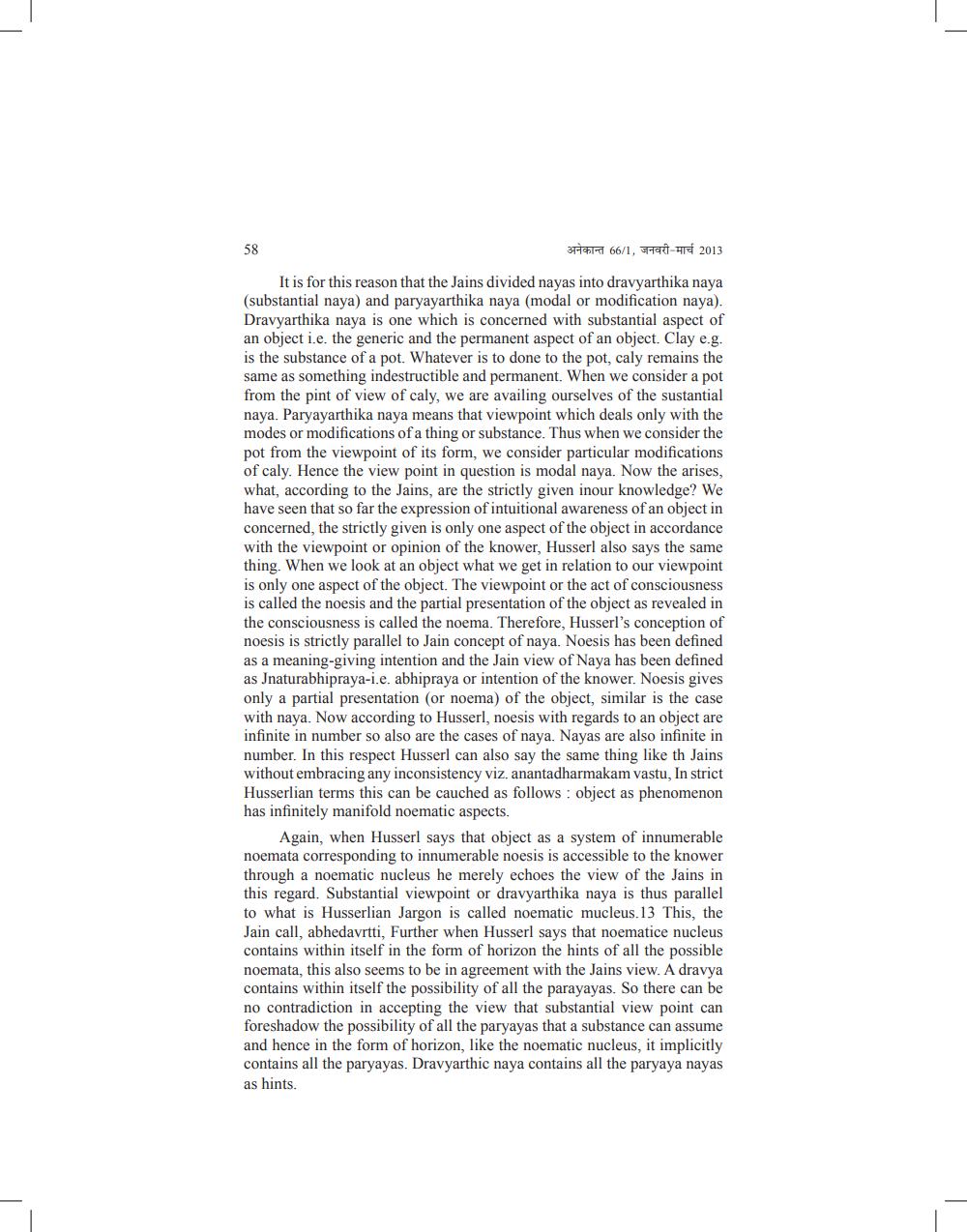________________
58
371
66/1, HR-HE 2013
It is for this reason that the Jains divided nayas into dravyarthika naya (substantial naya) and paryayarthika naya (modal or modification naya). Dravyarthika naya is one which is concerned with substantial aspect of an object i.e. the generic and the permanent aspect of an object. Clay e.g. is the substance of a pot. Whatever is to done to the pot, caly remains the same as something indestructible and permanent. When we consider a pot from the pint of view of caly, we are availing ourselves of the sustantial naya. Paryayarthika naya means that viewpoint which deals only with the modes or modifications of a thing or substance. Thus when we consider the pot from the viewpoint of its form, we consider particular modifications of caly. Hence the view point in question is modal naya. Now the arises, what, according to the Jains, are the strictly given inour knowledge? We have seen that so far the expression of intuitional awareness of an object in concerned, the strictly given is only one aspect of the object in accordance with the viewpoint or opinion of the knower, Husserl also says the same thing. When we look at an object what we get in relation to our viewpoint is only one aspect of the object. The viewpoint or the act of consciousness is called the noesis and the partial presentation of the object as revealed in the consciousness is called the noema. Therefore, Husserl's conception of noesis is strictly parallel to Jain concept of naya. Noesis has been defined as a meaning-giving intention and the Jain view of Naya has been defined as Jnaturabhipraya-i.e. abhipraya or intention of the knower. Noesis gives only a partial presentation (or noema) of the object, similar is the case with naya. Now according to Husserl, noesis with regards to an object are infinite in number so also are the cases of naya. Nayas are also infinite in number. In this respect Husserl can also say the same thing like th Jains without embracing any inconsistency viz. anantadharmakam vastu, In strict Husserlian terms this can be cauched as follows: object as phenomenon has infinitely manifold noematic aspects.
Again, when Husserl says that object as a system of innumerable noemata corresponding to innumerable noesis is accessible to the knower through a noematic nucleus he merely echoes the view of the Jains in this regard. Substantial viewpoint or dravyarthika naya is thus parallel to what is Husserlian Jargon is called noematic mucleus.13 This, the Jain call, abhedavrtti, Further when Husserl says that noematice nucleus contains within itself in the form of horizon the hints of all the possible noemata, this also seems to be in agreement with the Jains view. A dravya contains within itself the possibility of all the parayayas. So there can be no contradiction in accepting the view that substantial view point can foreshadow the possibility of all the paryayas that a substance can assume and hence in the form of horizon, like the noematic nucleus, it implicitly contains all the paryayas. Dravyarthic naya contains all the paryaya nayas as hints.




